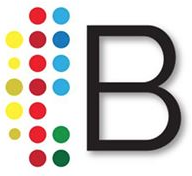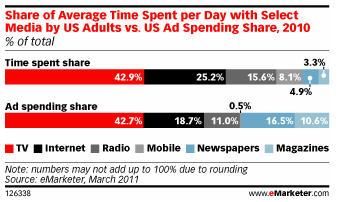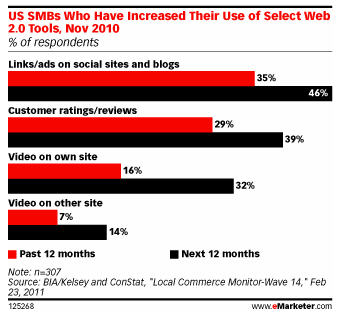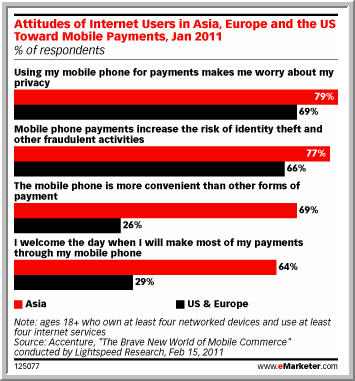According to new eMarketer reports, US spending on major media will continue its slow recovery from the recession. Total ad spending won’t come back to 2007 levels in the next few years, but TV ad spending is making a better-than-average comeback and will surpass 2007 spending levels by 2012. TV still retains the greatest share of US major media ad spending, at 39% and is expected to keep that hold through 2015. This means the increases in online ad spending—set to grow from 15% to 26% of the total by 2015—will come at the expense of print.
Online already represents the second-biggest advertising medium after television, after surpassing print newspaper ad spending in 2010. By 2013, online ad spending will be greater than print spending on both magazines and newspapers combined.
Even though online advertising is projected to increase its share of US major media ad spend, overall spending on digital, including internet and mobile, still hasn't risen to match consumption patterns. The internet took up 25% of adults’ daily media time in 2010, but received just 19% of US ad spend. Mobile is also behind. It claims 8% of media time, but most of that is devoted to communications activities marketers are not looking to interrupt.






